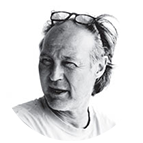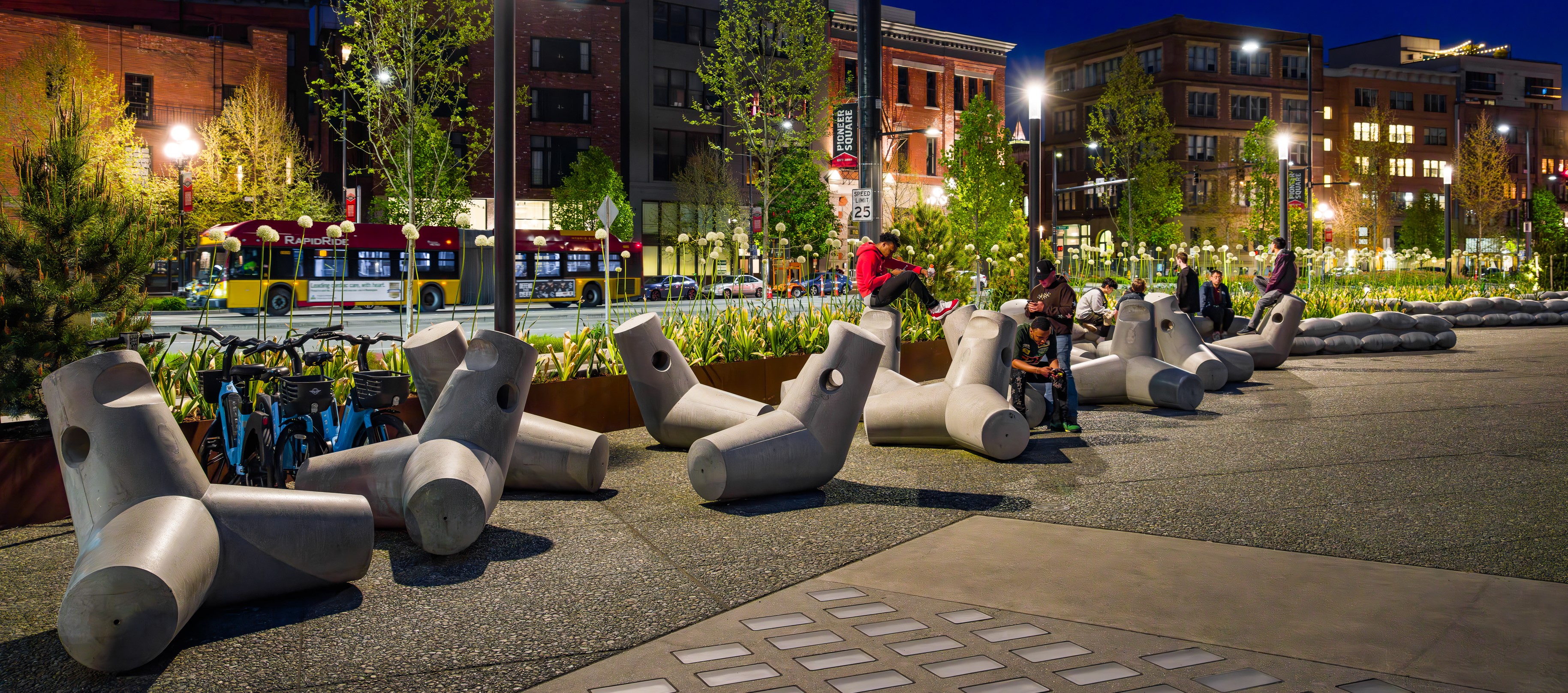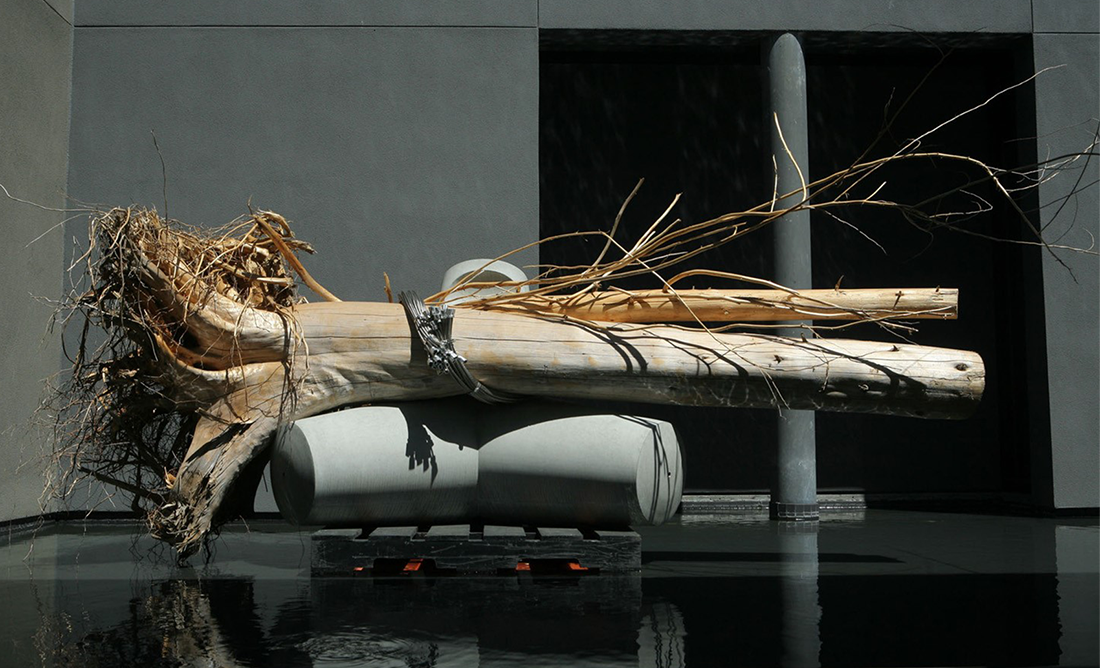
Buster Simpson's Migration Stage was installed in 2023 and is located at the southern end of the Park Promenade, near the Pioneer Square Habitat Beach.
"The environmental restoration of the urban water's edge calls for an honest aesthetic, with dynamic agility in the face of climate change, as we enter the human-influenced Anthropocene epoch."
Artist Statement
Buster Simpson's Migration Stage presents a sculptural construct created for the present and in anticipation of the future. The installation consists of fourteen Anthropomorphic Dolosse and fifteen SeaBearer units and is located on Seattle’s downtown waterfront at the foot of Yesler Way. Migration Stage provides improvisational social amenities and is also intended to be appropriated for ecological utility as necessitated by climate and environmental changes. By enabling flexibility of placement, future generations have the option to re-set the stage.
Art is a tool. The forms of the concrete Anthropomorphic Dolosse and SeaBearer units draw from structural, ecological and cultural sources. Their functionality reflects the tradition of Indigenous tools that are both utilitarian and aesthetic objects.
Historically, a “dolos” referred to a children’s toy created from repurposed ox or lamb knucklebones. The bones had a self-nesting characteristic that inspired the original 1960’s concept of the dolosse (plural) that are now used worldwide as shoreline armor. The Migration Stage dolosse join a global presence of these iconic sentinels of the Anthropocene. For Anthropomorphic Dolosse, the dolos form has been anatomically modified to become an art tool with the addition of "arm" holes and "facial" indentation. The arm holes add to the utility of the 2900-pound figurative forms, becoming rope holds for anchoring woody debris to create marine habitat. As the Salish Sea rises with climate change, Anthropomorphic Dolosse could either remain in place for habitat anchoring, or be relocated by future generations as needed, repurposed as part of an ecological civic tool kit.
The ninety lineal feet of segmented SeaBearer units serves dual purpose, as seating and as portable sea barriers. The form suggests movable barriers or product stacked along the working waterfront, and foreshadows sandbag deployment against rising waters. SeaBearer units resemble buoyant booms and bladder containment. Metaphorically, the name “SeaBearer" infers that the installation is a bearer of information, news, a prophecy.
Today, Anthropomorphic Dolosse and SeaBearers provide a place to gather. They are catalytic social tools of improvisational engagement. Together they make up Migration Stage, an artifact to the future. Children who play on the installations today may one day come to think differently about their childhood playground, to see it as a tool, a storytelling opera, a Salish Sea dance of resilience, agility and equity.
Have a seat on the lap of mother dolos. The stage is set, or is it?





